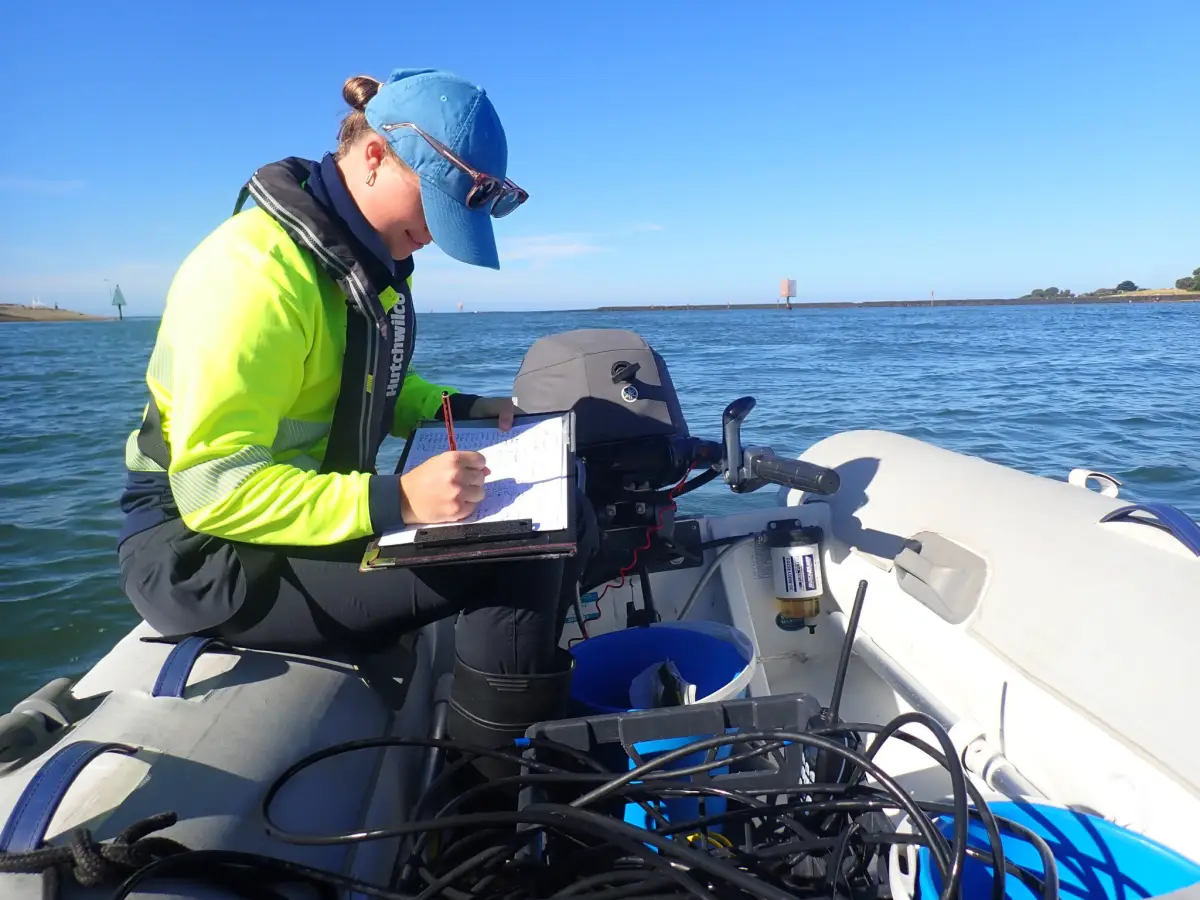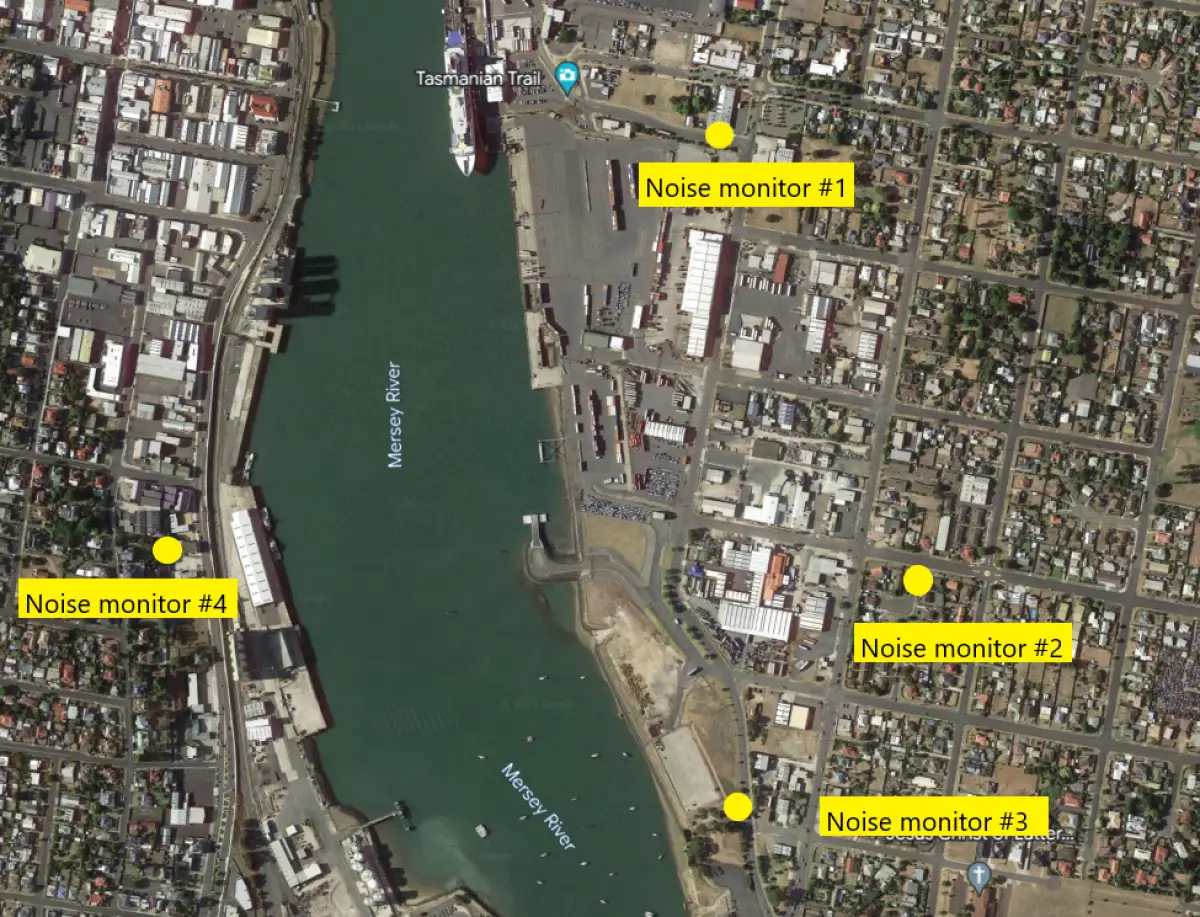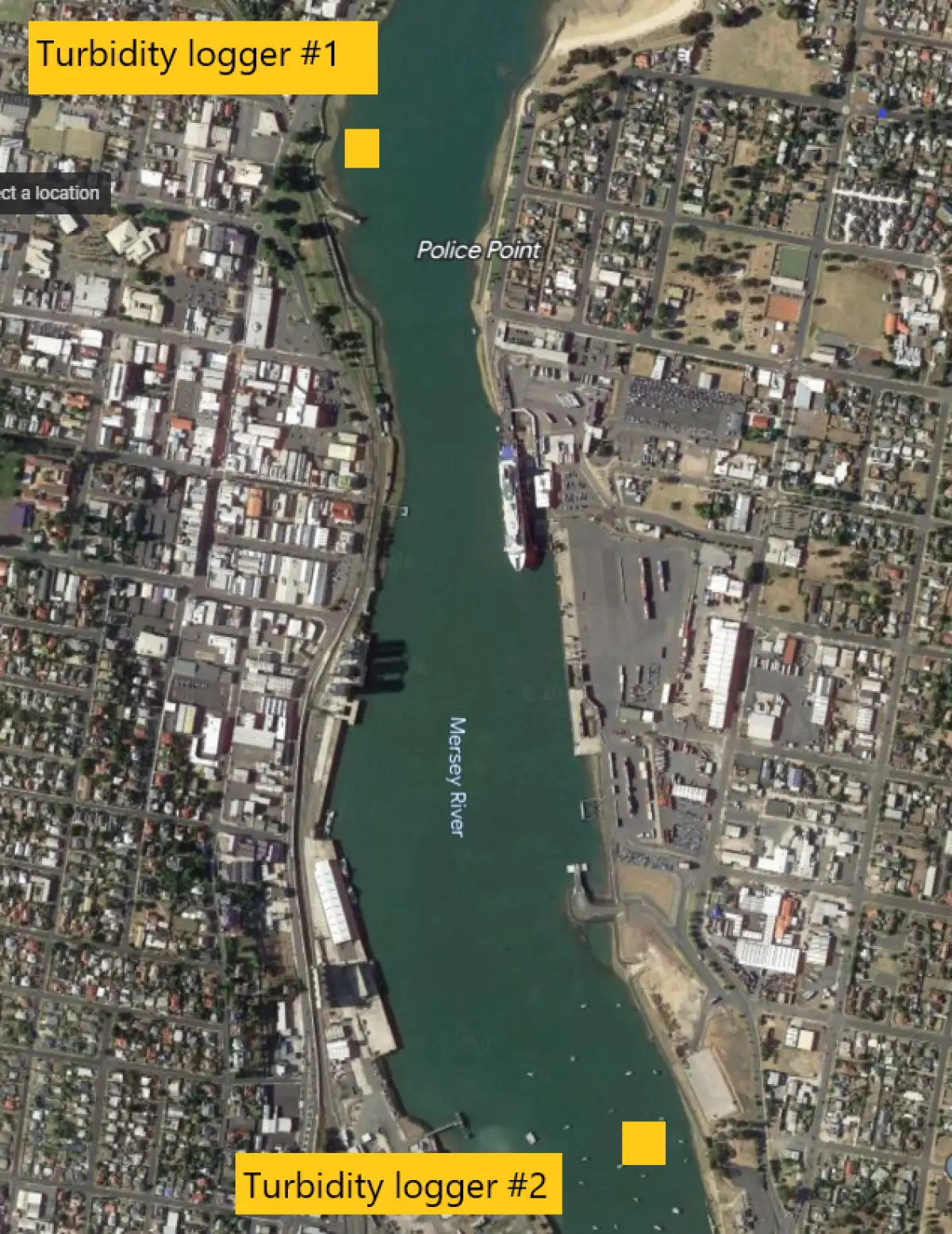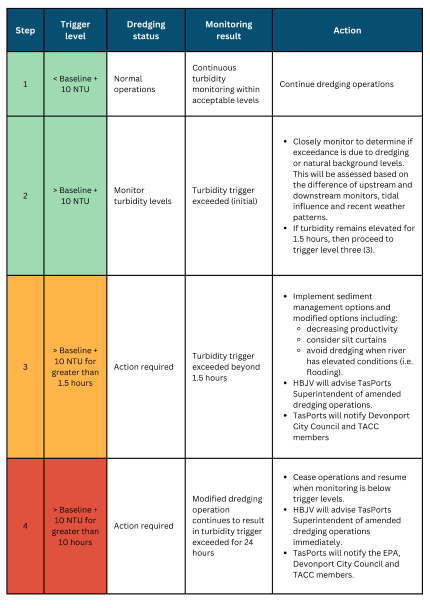Environmental Monitoring
Large construction sites can often be noisy and dusty places. Depending on the nature of the work, there will be extra traffic, including truck movements, on the roads in close proximity to the site.
An important part of what we do at TasPorts is to make sure the impact of our construction work is minimised for the local community and the environment, which is why environmental monitoring is so important for us.
We currently monitor the following aspects of the construction work on the surrounding areas (both natural environment and residential / commercial areas).

Noise
The working Port is already an industrial area subject to considerable existing noise.
TasPort’s contractors, the Hazell Brady Joint Venture (HBJV) facilitate noise monitoring and reporting to ensure compliance with the Environmental Protection Notice. This is for Stage 1 of the new Terminal 3, dredge and reclaim works package. Below is an image showing the four (4) continuous noise logging locations.
Noise monitoring locations
The noise monitors are located on both sides of the Mersey River (Eastern and Western shores) within relative proximity to the QuayLink project.
The noisiest element of the project will be when the piles are installed. The piles will be driven into the riverbed using both a vibratory hammer and a large impact hammer. Once complete the new wharf will be constructed on top of the piles. The pile driving will be carried out by a piling rig working from a large floating barge. A crane will also be positioned on the barge and will be used for lifting the piles.
From April 2023, TasPorts’ contractor, HBJV, will start the installation of steel piles into the riverbed.
Should noise emissions exceed recommended levels, then the EPA must be formally notified, and effective control measures implemented to attenuate noise levels to acceptable limits.

Turbidity
TasPorts undertake real time turbidity monitoring in the Mersey River while dredging activities are being undertaken. Turbidity loggers have been deployed both upstream and downstream of dredging works and data is reviewed daily.
Location of turbidity loggers
We have also collated data from various sources, including Mersey River Acoustic Doppler Current Profiler (ADCP) measurements, telemetered turbidity data from instruments deployed for the QuayLink project, and Mersey River flow data from the Department of Natural Resources and Environment (NRE) monitoring network.
In addition, vessel-based measurements of dredge plume turbidity in the Port of Devonport have also been undertaken.
If turbidity levels exceed adopted turbidity reference levels, then further investigations will be carried out to confirm the source of the increased levels, and if elevated turbidity is attributable to the dredging, then sediment management measures will be reassessed and mitigation measures put in place.

Adaptive management strategy

It is important to note when interpreting turbidity data that an ‘adaptive management’ strategy has been developed by HBJV (and approved by the EPA), which is presented in the table (left).
Water quality
Weekly water quality monitoring for dissolved nickel, chromium, manganese, and mercury will be undertaken in the Mersey River during dredging and if results are found to exceed the adopted guideline values, sediment management measures will be reassessed and mitigation measures put in place, if elevated water quality results are attributable to dredging.
Air quality monitoring
The atmospheric conditions of the construction site are monitored at all times. Dust monitoring is occurring at various locations across the site using two different types of monitors. We use a dust (insoluble) deposition monitor and a particulate monitor to measure dust and smoke.
In addition we utilise a water truck which traverses the whole site using a water spray to suppress dust rising.
Air quality results are reviewed weekly, and mitigation measures put in place should exceedances occur.

